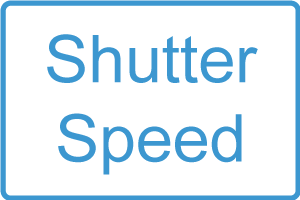
Learn & Explore Series Episode 50
"Understanding the Most About Shutter Speed"

 Did You Know?
Did You Know?
Camera shake often occurs when shooting at a slow shutter speed and with a lens with a long focal length. Use the reciprocal rule – divide 1 by the focal length of the lens – to determine a “safe” shutter speed to make sure the image will remain sharp.

 Did You Know?
Did You Know?
The image stabilization system in many cameras and some lenses may allow you to use a shutter speed slower (2 to 4 stops) than the reciprocal rule calculates.

 Did You Know?
Did You Know?
Shutter speed does not affect flash exposure, as the light from a flash is of a much shorter duration than the opening and closing of the shutter. The shutter must simply be open when the flash fires.
Questions covered in the above interview:
- What is shutter speed?
- Is there an ideal shutter speed?
- What is the relationship of shutter speed to aperture and ISO?
- Where are shutter speeds selected on a camera?
- What is the shutter priority mode and how does it help improve exposure?
- What are the advantages of a slow shutter speed?
- What are the advantages of a fast shutter speed?
- How fast must the shutter speed be to freeze motion?
- What is the panning technique and how does it relate to shutter speed?
- How does a shutter work mechanically?
- What is shutter lag?
- What is rear curtain sync?
- How is shutter speed used to create interesting waterfall photos?
- At what shutter speed is a tripod required to make sure photos are sharp?
- What is the “B” or “bulb” setting and how is it used?



